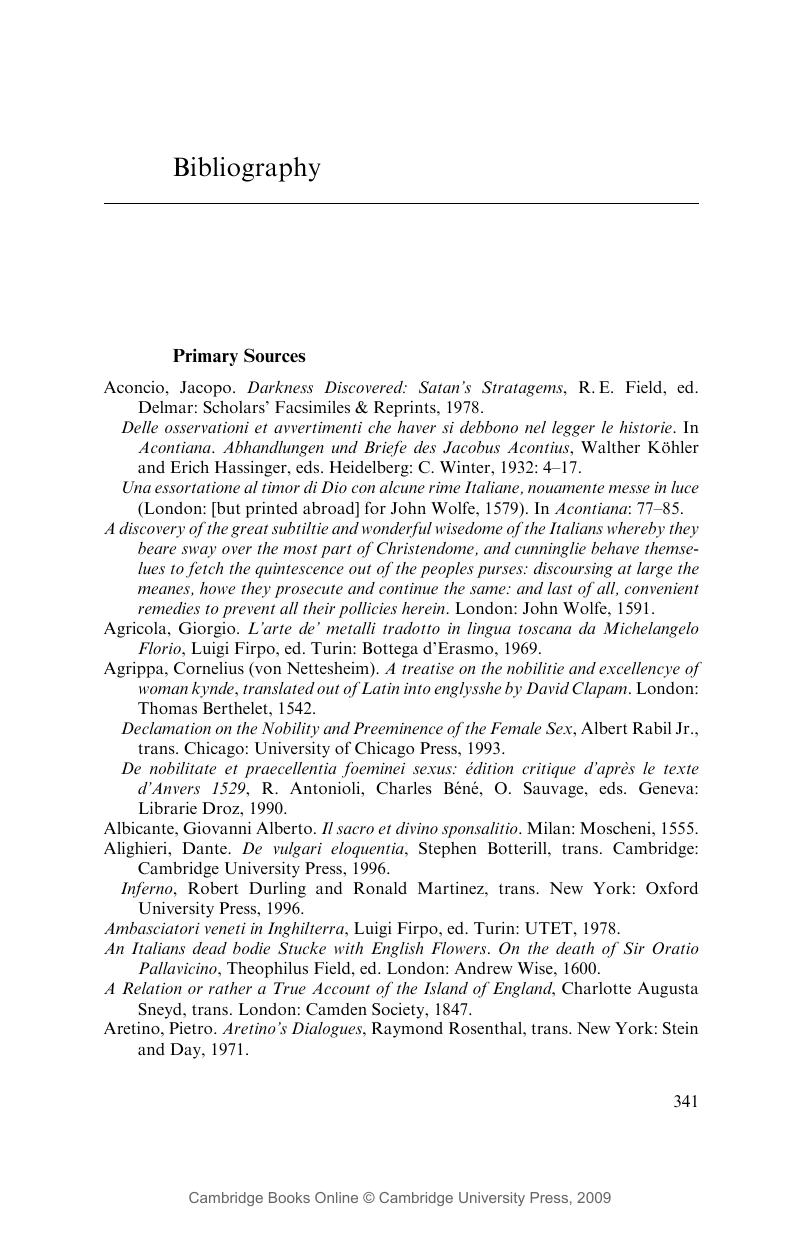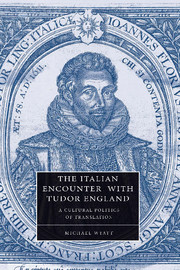Book contents
- Frontmatter
- Contents
- List of figures
- Acknowledgments
- Note on the text
- Introduction
- Part 1 ‘A parlar d'Inghilterra’: Italians in and on Early Modern England
- Part 2 John Florio and the Cultural Politics of Translation
- Appendix I
- Appendix II
- Notes
- Bibliography
- Index
- Cambridge studies in renaissance literature and culture
- References
- Frontmatter
- Contents
- List of figures
- Acknowledgments
- Note on the text
- Introduction
- Part 1 ‘A parlar d'Inghilterra’: Italians in and on Early Modern England
- Part 2 John Florio and the Cultural Politics of Translation
- Appendix I
- Appendix II
- Notes
- Bibliography
- Index
- Cambridge studies in renaissance literature and culture
- References
Summary

- Type
- Chapter
- Information
- The Italian Encounter with Tudor EnglandA Cultural Politics of Translation, pp. 341 - 365Publisher: Cambridge University PressPrint publication year: 2005

